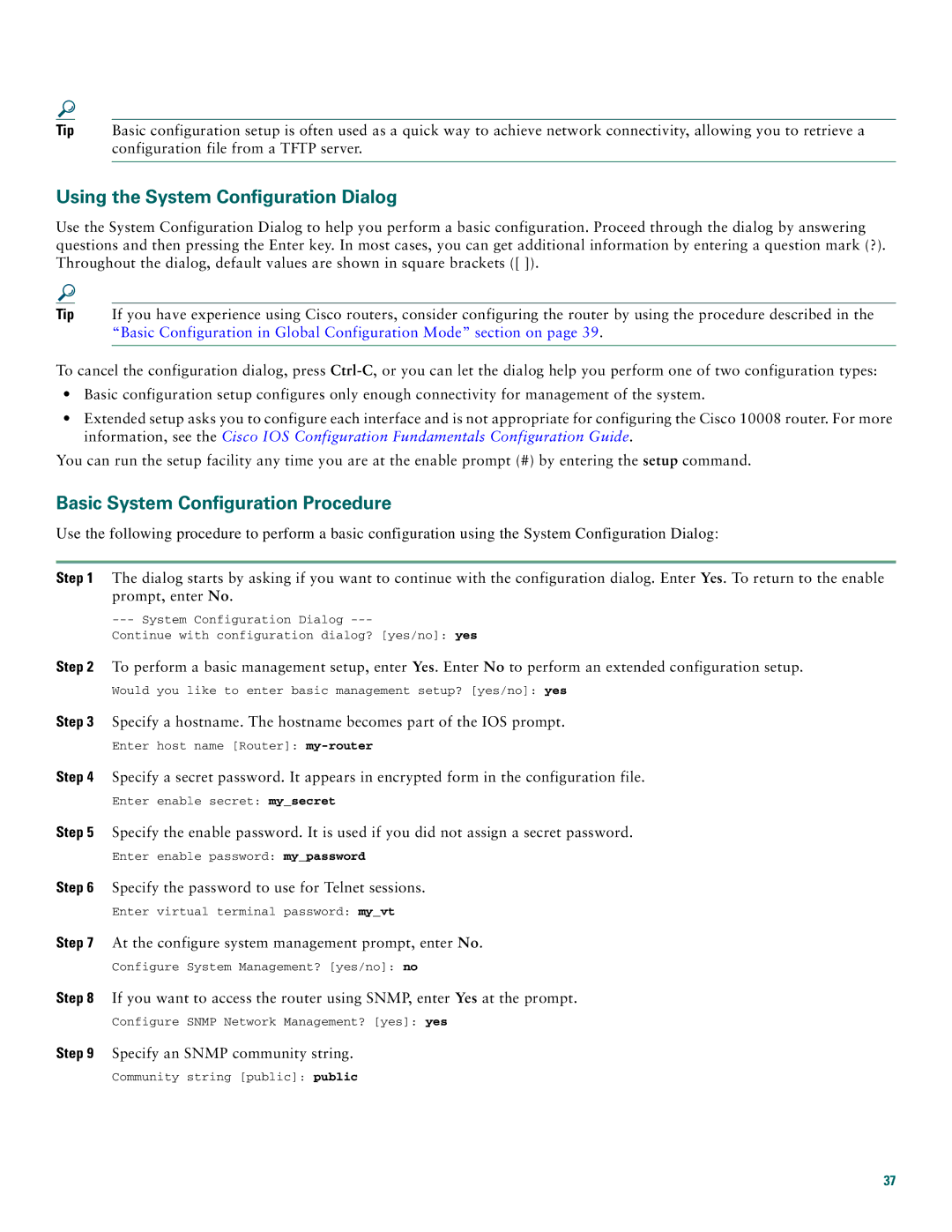
Tip Basic configuration setup is often used as a quick way to achieve network connectivity, allowing you to retrieve a configuration file from a TFTP server.
Using the System Configuration Dialog
Use the System Configuration Dialog to help you perform a basic configuration. Proceed through the dialog by answering questions and then pressing the Enter key. In most cases, you can get additional information by entering a question mark (?). Throughout the dialog, default values are shown in square brackets ([ ]).
Tip If you have experience using Cisco routers, consider configuring the router by using the procedure described in the “Basic Configuration in Global Configuration Mode” section on page 39.
To cancel the configuration dialog, press
•Basic configuration setup configures only enough connectivity for management of the system.
•Extended setup asks you to configure each interface and is not appropriate for configuring the Cisco 10008 router. For more information, see the Cisco IOS Configuration Fundamentals Configuration Guide.
You can run the setup facility any time you are at the enable prompt (#) by entering the setup command.
Basic System Configuration Procedure
Use the following procedure to perform a basic configuration using the System Configuration Dialog:
Step 1 The dialog starts by asking if you want to continue with the configuration dialog. Enter Yes. To return to the enable prompt, enter No.
Continue with configuration dialog? [yes/no]: yes
Step 2 To perform a basic management setup, enter Yes. Enter No to perform an extended configuration setup.
Would you like to enter basic management setup? [yes/no]: yes
Step 3 Specify a hostname. The hostname becomes part of the IOS prompt.
Enter host name [Router]:
Step 4 Specify a secret password. It appears in encrypted form in the configuration file.
Enter enable secret: my_secret
Step 5 Specify the enable password. It is used if you did not assign a secret password.
Enter enable password: my_password
Step 6 Specify the password to use for Telnet sessions.
Enter virtual terminal password: my_vt
Step 7 At the configure system management prompt, enter No.
Configure System Management? [yes/no]: no
Step 8 If you want to access the router using SNMP, enter Yes at the prompt.
Configure SNMP Network Management? [yes]: yes
Step 9 Specify an SNMP community string.
Community string [public]: public
37
